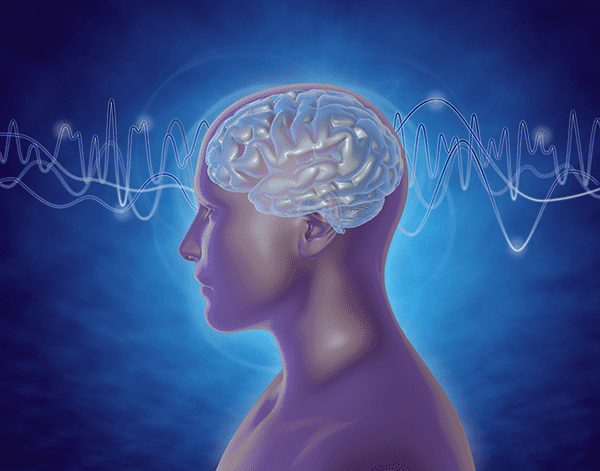We are now offering completely customized virtual neuropsychological testing assessments and remote neurofeedback! Schedule your assessment and treatment today
Serving children, adolescents, and adults in the Palo Alto area. We provide drug free solutions for ADD/ADHD, anxiety, autism, and concussion.

With a team of capable and caring professionals, Abbey Neuropsychology Clinic has been working to ensure that our clients receive the highest standard of care. We know you want to get started with your evaluation right away – which is why there’s an immediate booking program for same day consultations!
Imagine the possibilities if we could help your child unlock their full potential. Our assessments include a functional brain map, to identify where they stand in comparison with other children of similar age and provide you with technology that can train them towards realizing their full potential!
We come to you! We deliver the eeg neurofeedback equipment to your home for your convenience in Palo Alto. So our assessments and neurofeedback are all done, in your home, in Palo Alto. Our learning assessments are comprehensive and saves you time, because you don’t have to travel around. You literally get to stay at home. Our process is fast, easy, and we provide the most effective drug free solutions possible.
We also provide you with the equipment you need to do the highest level of neurofeedback in your home. We have provided our Palo Alto neurofeedback clients opportunities to overcome their ADHD, learning disabilities, anxiety, and depression for over 14 years.
The assessment and neurofeedback that we provide for you is just the start. We provide you with a comprehensive system so your child can be their very best. The goal is to help them be the best version of themselves, and to help them be independent, so that they can pursue their dreams and be the pilot of their own destiny.

Also known as eeg biofeedback, neurofeedback is a technique that uses the brain’s electrical activity to train it by providing real-time feedback on its own activity. Neurofeedback has been used in clinical settings and research laboratories for over 50 years and has also been employed by athletes, musicians, artists, and others who need high levels of mental focus. But what are some ways you can use neurofeedback training?
One way to use eeg neurofeedback training is for ADHD. Clinical studies have shown that eeg neurofeedback is an effective treatment for ADHD, producing long-term improvement in symptoms. In a study by Monastra et al. (2005), children with ADHD were randomly assigned to either a neurofeedback group or a control group. The neurofeedback group showed significant improvements in attention, hyperactivity, and impulsivity. In our clinic, we find that many of our clients achieve excellent results between 40-60 sessions. Individual results vary, and depend on the diagnosis or reason for doing neurofeedback, the severity of the condition, and your rate of learning how to use your brain in a more optimal way. In addition, some conditions generally require more training than others. For example, a child with autism would likely require more sessions, likely needing a minimum of 60 sessions, and sometimes more. The question isn’t how many you have to do, instead, the question becomes,“what is my learning curve and at what point do I reach maximum benefit from this therapy to achieve ultimate results?” Of course, the answer is individualized, and speaking with a professional can provide you with clearer answers depending on your goals. After approximately 20 sessions, there are more data points to understand your learning curve. It is a good time to check in somewhere around 20-30 sessions to get a better idea what the course of treatment would look like. The good news is that your practitioner can see their patient’s brain waves during the session as well as perform updated brain maps.

Another way to use neurofeedback is for anxiety disorders. Neurofeedback has been shown to be an effective treatment for anxiety disorders. This form of treatment is becoming more common in clinical practices, especially when used alongside other therapies like cognitive behavioral therapy or medication management. Many of our clients have tried medication or are currently on them, and the majority of our clients no longer need medications after neurofeedback and report doing much better than when on medication alone. Neurofeedback can be an extremely effective adjunct to behavioral therapy, cognitive behavioral therapy, and other forms of psychotherapy. Most of our clients report getting much more out of their psychotherapy sessions while doing neurofeedback and beyond. This is true for a variety of psychiatric disorders as well as goals for optimization and enhancement.
Some people might use eeg neurofeedback to improve their focus and concentration, while others might use it to manage stress or anxiety. Neurofeedback can also be helpful for people with ADHD or autism, and it can sometimes be used to treat conditions like migraines or epilepsy. Moreover, many individuals take advantage of eeg biofeedback for sports optimization and peak performance. No matter what your goals are, if it occurs in the brain, there is a good chance that neurofeedback can help. Brain wave activity is highly trainable through operant conditioning. Operant conditioning is a reward-based method used to shape behavior, and it is the method that is used for eeg biofeedback. In other words, when we capture you using your brain in a more optimized way, we notify you instantaneously. It’s similar to getting other types of rewards, like praise for doing your job well. The major difference in eeg biofeedback is that the rewards are very rapid (up to twice a second) and specific to the areas of your brain that would benefit from optimization. You should know that your brain wave activity is primarily under your voluntary control, and using eeg biofeedback to improve your brain functions is an amazing way to realize your potential.
Neurofeedback is a form of biofeedback that has been found to help with many conditions such as ADHD, anxiety and depression. It’s also used for many other mental health conditions and performance enhancement. People learn how to control their own brain waves so they can experience better mental health or enhance their abilities in certain areas like athletic performance. Let’s look at how it works.
The first step is to have a neuropsychological assessment, which can range from a very brief assessment to a comprehensive one. This will help determine what type of feedback you need and the areas of your brain that need improvement. You will then be given a brain map which will show you where your brain waves are at their peak performance and where they could use some work. This brain map, or quantitative eeg (qEEG), will help you understand the ways in which your brain activity is contributing to your areas of concern. Learning how to control your brainwave activity and expanding your range in which you use it can be beneficial in extraordinary ways.
 The most advanced form of qEEG available is done through the use of swLORETA. Using a program called Neuronavigator, the map will show you 3 main parameters, consisting of power, coherence, and phase. What’s amazing is through this very advanced form of brain imaging, your map will render over 24,000 data points, and we then compare your brain activity to an FDA registered data base against other individuals your same age. This helps us understand where the opportunities are for you to improve your brain and gain more cognitive control over you brain activity. Many people don’t realize that through eeg neurofeedback, you can gain control over your brain activity through receiving very rapid feedback, and making your own calibrations to your brain, accordingly. It’s like gaining superpowers for your brain, so you are in charge of what it is doing and thereby realizing your exponential potential.
The most advanced form of qEEG available is done through the use of swLORETA. Using a program called Neuronavigator, the map will show you 3 main parameters, consisting of power, coherence, and phase. What’s amazing is through this very advanced form of brain imaging, your map will render over 24,000 data points, and we then compare your brain activity to an FDA registered data base against other individuals your same age. This helps us understand where the opportunities are for you to improve your brain and gain more cognitive control over you brain activity. Many people don’t realize that through eeg neurofeedback, you can gain control over your brain activity through receiving very rapid feedback, and making your own calibrations to your brain, accordingly. It’s like gaining superpowers for your brain, so you are in charge of what it is doing and thereby realizing your exponential potential.
Once you have this information, you will work with a therapist to determine the best course of action for your brain and how neurofeedback can benefit you. For example, some people might need more help concentrating or staying on task while others may require less anxiety in social situations.
In the case of traumatic brain injury, you may be experiencing headaches, brain fog, and difficulties sleeping. Moreover, concussions often are accompanied with changes in mood in which you may become quick to anger or have periods in which you are extremely sensitive to light and sound. In fact, many of our clients report to us that they are unable to view computer screens without becoming symptomatic when the first come in to see us. However, through the course of their treatment, the majority of clients no longer have these sensitivities and are able to get back to life, including work, play, and leisure activities.
Once these needs have been identified, it’s time to start working towards those goals. The brain map you received from your assessment will help to guide this process. You’ll be given a task that focuses on the areas of your brain that was causing you trouble reaching their peak performance. All you have to do is relax and focus on the task, which is primarily making the computer display a movie with your brain acitivity, it’s that simple. The protocols we design may focus on a specific brain region and brain rhythms. Depending on your specific needs, your protocol may focus on various parts of your cerebral cortex, anterior cingulate cortex, or motor cortex. From a clinical neurophysiology standpoint, it gets quite technical. However, just leave that hard work for to us. For you, it’s easy, and your clinician will guide you through every step of the way. The goal is to get your brain waves up to their target performance level so you can achieve your goals and realize your dreams.
This sounds like it would be a difficult process, but fortunately, it’s not as bad as it sounds. In fact, many people find it to be enjoyable and fulfilling. It can also be a great way to meet new people who share your interests in improving brain health.
Only you can answer that question but if you’re curious about how it works or the benefits that it can provide, schedule a free, virtual consultation with us at Abbey Neuropsychology Clinic
Neurofeedback research has shown to be effective for treating ADHD, anxiety disorders, and other mental health conditions. It may be especially helpful for people who have not responded to other treatments. In the case of ADHD, many people suffer from slower brain wave activity. This is also true of brain injuries as well. Neurofeedback research also shows individuals with ADHD may have hypoconnectivity in their frontal lobes. That is, the pathways in which the neuronal signals travel are not optimized. It’s like when you are trying to talk to someone on a cell phone with a bad connection. Eventually you understand each other, but it is an inefficient process. Establishing better connections (e.g., phone lines) makes your brain run more efficiently and effortlessly, so you can achieve your goals without so much effort. Clinical neuroscience has demonstrated that doing neurofeedback can significantly improve these connections so that the brain signals are more efficient. By speeding up the brain wave activity and also improving the efficiency of the brain signals, your brain performs better, and so it becomes easier to concentrate. In fact, many of our clients report having laser sharp focus after completing our program. Prior to doing neurofeedback therapy, 5 minutes of homework turned into a 2 hour struggle, but upon completion of our treatment program, they report being able to focus and concentrate for 30 to 60 minutes and beyond, depending on the age of the person. Young children start doing their homework independently, and adults suddenly find themselves being more successful at work and relationships.
There are several different types of neurofeedback, and the type that is best for you will depend on your specific condition and your needs and goals. Some common types of neurofeedback include:

This type of neurofeedback helps to decrease the amount of theta waves and increase the amount of beta waves. This can help to improve mood, anxiety, and cognitive function. This form of neurofeedback has existed for many decades and was created by a friend and colleague of mine, Dr. Joel Lubar.
This type of neurofeedback helps to increase the amount of SMR waves. This can help to improve focus and attention span, as well as reduce impulsivity and hyperactivity. Barry Sterman first invented this form of training in the 1960s. He was commissioned by NASA to see if he could find a way to minimize the effects of toxic gas that astronauts may be exposed to. Dr. Sterman trained cats to perform the sensory motor rhythm. When the cats who completed the SMR training were exposed to the toxic gas, they were unaffected. However, the 100% of thecats who did not do SMR training had severe reactions to it. https://nyaspubs.onlinelibrary.wiley.com/doi/abs/10.1111/j.1749-6632.1969.tb12916.x
Loreta neurofeedback takes advantage of 19 sensors, allowing the neurofeedback therapy to image the brain wave activity from a 3 dimensional standpoint.
An even more precise method of eeg biofeedback is swLORETA, in which over 24,000 data points can be imaged, and provides the most comprehensive and the most powerful results possible. In fact, swLORETA can monitor brain wave activity across the cerebral cortex and subcortical structures including the cerebellum. Many people don’t realize that the cerebellum is not only important for modulating movement, but it also plays an instrumental role in thought modulation, including executive functions, emotional regulation, and attention abilities. It’s quite astonishing what modern science has accomplished. We now have the opportunity to change our own destiny and not settle for the genetic cards we were dealt in life. Instead, you can train your brain to be in alignment with your goals, so you don’t have to work so hard to achieve what you want in life.
Neurofeedback has been shown to be more effective than placebo for many conditions such as ADHD, anxiety disorders, chronic pain, and epilepsy. It has also been shown to be as effective as medication for ADHD, but without the side effects or risk of addiction that come with prescription drugs.
One benefit of neurofeedback is that it does not require a lot of time to complete. Most sessions last 30 minutes and are done twice per week for several weeks.
If you are considering neurofeedback as a treatment for a mental health condition, book a consult with us or to talk to your doctor. He or she can help you determine if neurofeedback is the right treatment for you.
Neurofeedback can be used to treat a variety of mental health conditions. It may provide the following benefits including improvements in attention, executive functions, and academic performance. Many people show significant improvements in mood and reductions in anxiety, including social anxiety and PTSD. It can also be used to treat concussions, which is extremely important given the latest neuroscience research on the long term effects of concussion and CTE.
https://bjsm.bmj.com/content/51/12/969.abstract
Because neurofeedback therapy is efficacious for concussion, you no longer have to just sit around and wait for your symptoms to go away on their own. Instead, now you can actually do something about them.
 Regardless of your stance on mental health, it is important to be at your peak cognitive performance at all stages of your life to feel and do your best. We have all experienced many challenges over the course of the pandemic. Moreover, neuroscience has shown that Covid-19 causes neurocognitive deficits in many people who were unfortunate to get this virus. Whether your symptoms were caused by Covid-19, or a condition you were born with like ADHD, you can improve your brain functioning through doing cognitive tasks and exercises. Neurofeedback is the most powerful brain training system that exists today, and when combined with other forms of cognitive training, the combination can be life changing.
Regardless of your stance on mental health, it is important to be at your peak cognitive performance at all stages of your life to feel and do your best. We have all experienced many challenges over the course of the pandemic. Moreover, neuroscience has shown that Covid-19 causes neurocognitive deficits in many people who were unfortunate to get this virus. Whether your symptoms were caused by Covid-19, or a condition you were born with like ADHD, you can improve your brain functioning through doing cognitive tasks and exercises. Neurofeedback is the most powerful brain training system that exists today, and when combined with other forms of cognitive training, the combination can be life changing.
Do you have any questions about neurofeedback or how it can help people?
Some of the most common questions we get asked by clients and parents include: Is neurofeedback right for me/my child? What age group is typically treated? How long does treatment take? What kind of results should I expect to see and how soon after starting therapy will I notice a difference in my mood, sleep patterns or behavior?
Most mental health conditions are very treatable with neurofeedback. However, it depends on your clinician’s training and expertise. The setting is also very important. For the most part, mild to moderate conditions are very treatable and have very low risk. Some of the most common side effects are feeling tired, irritable, or energized after a session. A very small portion of people experience a headache after their session. The good news is, that all of the side effects are temporary and fleeting, and resolve within a few hours. If you do get a headache, be sure to tell your trainer, and your protocol can be reduced to include fewer metrics. The same is true with feeling tired, irritable, or energized, if it’s too much for you, just tell you trainer or doctor and they can make adjustments to your protocol so you don’t experience any side effects of they are very minimal. These side effects are just your brain’s way of telling you that you worked out your brain a bit too hard, so by lessoning your load, you should be just fine. Just leave it up to your doctor to make minor adjustments. Having said all this, the majority of people who do neurofeedback do not report any side effects at all. This is especially true for z-score neurofeedback, which utilizes an FDA approved data base to ensure you are being trained in the right direction. This FDA data base is what is used for swLORETA training described above.
Using neurofeedback to treat traumatic brain injury, or concussion, is also very safe and effective. Your doctor will learn more about your condition through the assessment process and will be able to tailor your protocol to your needs. If you are very sensitive to light, sounds, and touch, be sure to tell your doctor, and they can make adjustments so you get the most out of your neurofeedback services.
Drug addiction treatment can also incorporate neurofeedback for a comprehensive treatment program. Centers that use neurofeedback are growing throughout the world. However, neurofeedback alone would not be a sufficient treatment. You should expect to be enrolled in a treatment program for this complex condition that would include counseling, potentially medical treatment, and group support. When combined in this way, neurofeedback can be a part of an efficacious treatment program. This is especially important for drug addiction, as self regulation training is one of the most important aspects of this treatment, and neurofeedback can help you gain control of your impulses and emotions.
Temporary increased anxiety or insomnia in the beginning of treatment. While this is usually temporary, it is not unusual for someone to feel more anxious during their first few sessions when they are trying to learn how to control their brain.
Temporary increased symptoms for bipolar people during times when their moods are unstable. The same suggestions apply here as above, in that you should discuss this with your therapist before continuing treatment if these issues arise so they can help you through them.
Overall, the risks associated with neurofeedback are relatively small and can be managed by working closely with a therapist. When done correctly, it can be an extremely effective treatment for mental health conditions.
It is very difficult to find a neurofeedback practitioner who will know if the person’s insurance plan covers their treatment. However, it may be possible that some private insurances may cover some of your treatments if you can provide medical documentation as proof that this type of therapy has been beneficial for other people with similar conditions and diagnoses. Many practitioners will provide you with a superbill, so you can turn it in to your insurance company to potentially get reimbursement. You can also ask your doctor to provide you with the insurance codes to see how much your insurance will cover for neurofeedback.Empty heading
Neurofeedback is a type of therapy that uses brain waves to help people change their behavior or improve their mental health. During neurofeedback, someone will wear a cap that records their brain waves. The person then tries to make a movie or game work, with their brain, on a screen. This very quick feedback is used to optimize your brain activity. Usually this means learning how to control one’s own thoughts and feelings.
The first form of neurofeedback used a single channel, and the client learned how to control their brain in that specific region directly under that channel. This form of neurofeedback was developed several decades ago by Barry Sterman in the 1960s. Today it is still in use, although there are currently more powerful and more comprehensive ways to deliver neurofeedback.
 Another form of neurofeedback uses 1 to 6 sensors and is a form of neurofeedback called amplitude training. This form of neurofeedback therapy rewards the individual for making improvement in the energy in the affected areas in their brain and has been around for decades. Joel Lubar is a pioneer in the field of eeg biofeedback. He started using this form of neurofeedback in the 1970s, to improve sensory motor rhythms to treat ADHD. Barry Sterman also used this form of neurofeedback to treat conditions like epilepsy. More advances have been made in neurofeedback since then. Rather than just treating a single area or even up to 6 areas for a single parameter (i.e., energy), the latest advances in neurofeedback (swLORETA) can train 1000s of areas of the brain, and their connections and speed of neurotransmission.
Another form of neurofeedback uses 1 to 6 sensors and is a form of neurofeedback called amplitude training. This form of neurofeedback therapy rewards the individual for making improvement in the energy in the affected areas in their brain and has been around for decades. Joel Lubar is a pioneer in the field of eeg biofeedback. He started using this form of neurofeedback in the 1970s, to improve sensory motor rhythms to treat ADHD. Barry Sterman also used this form of neurofeedback to treat conditions like epilepsy. More advances have been made in neurofeedback since then. Rather than just treating a single area or even up to 6 areas for a single parameter (i.e., energy), the latest advances in neurofeedback (swLORETA) can train 1000s of areas of the brain, and their connections and speed of neurotransmission.
Lastly, there is qEEG or quantitative electroencephalography neurofeedback, or swLORETA. This process maps the entire brain and records its electrical activity. Therapists use this information to identify abnormal patterns that may be causing issues like migraines, addiction, ADHD, etc. Once these areas have been identified, neurofeedback can be used to target and normalize the brain waves in that area. This is the most comprehensive type of neurofeedback and can be very effective in treating a variety of issues.

Neurofeedback is a type of biofeedback that measures brain activity noninvasively using sensors placed on the scalp. It’s been around since the 1960s, and has many clinical applications today. Neurofeedback can be used to treat attention deficit hyperactivity disorder (ADHD), autism spectrum disorders (ASD), learning disabilities, and other conditions such as post traumatic stress disorder and sleep disorders.
Neurofeedback works by providing a visual or auditory signal when the brain is in an active state. The individual then learns to gradually change their focus of attention from day-to-day activities toward specific goals, such as improved performance at school or work. Over time, neurofeedback therapy can improve focus and decrease anxiety, as well as increase mental clarity and cognitive performance.
Neurofeedback is a process in which you work closely with an experienced neurofeedback practitioner. The goal of neurofeedback training is to help your brain establish healthier patterns. Neurofeedback essentially trains the way that your brain works by providing immediate feedback on how it’s doing, helping identify when there are certain changes needed and modifying the feedback until the brain establishes healthier patterns.
The length of neurofeedback training can vary from person to person, but it typically takes around 20-30 sessions for most people to starting seeing subtle, yet noticeable results. To reach your goals, most clients we see do 40 to 60 sessions, and sometimes more depending on a variety of factors such as age, severity of condition, and individual goals. Sessions are usually about 30 minutes long and take place 2-5 times a week. You will likely be asked to complete some homework exercises in between sessions.
Most people report feeling more relaxed and focused after neurofeedback training. Some people also experience improved sleep, reduced anxiety or depression symptoms, and lessened physical pain. While the results vary from person to person, most people see some improvement to very significant improvement in their symptoms. If you’re considering neurofeedback training, be sure to talk to your doctor about what you should expect. You can also book a consultation with us to see if neurofeedback is right for you, or your child https://calendly.com/marissa-samra/anc-zoom-consultation
What should I consider before neurofeedback training? You may want to consider what method is the best fit for you or your child. If you are seeking one of the most powerful drug free therapies for improving cognitive performance, socialization and communication skills, academic performance, and mood enhancement, then eeg neurofeedback may be for you. It would also be important for you to be a person who would stick with the therapy and see the full treatment through. You should be able to commit to a minimum of 40-60 sessions if you do swLORETA, the most powerful form of neurofeedback. Other forms of neurofeedback will require more sessions for a meaningful result. Whatever method you use, just make sure you are ready to do the full course of treatment.
 The number of sessions needed depends on a few variables, including your age, condition, and ability to learn. In general, younger clients have more neuroplasticity and tend to get better quicker. Moreover, the less severe the condition, the quicker you would expect to get better. Your ability to learn is also an important factor. In addition, your level of intelligence may also have an influence in that the higher your intelligence, the quicker you learn. This is often true of our clients. Very bright individuals tend to learn how to adjust to the eeg signals quicker. Moreover, individuals who have had experience with martial arts, sports, dance, and meditation already have a lot of experience with training mental states, such as their flow state. This tends to give them an advantage to neurofeedback training, since they have learned how to gain control over their brain activity through other experiences. Neurofeedback therapy would be a more precise way to train their brain so it can be optimized to its fullest potential.
The number of sessions needed depends on a few variables, including your age, condition, and ability to learn. In general, younger clients have more neuroplasticity and tend to get better quicker. Moreover, the less severe the condition, the quicker you would expect to get better. Your ability to learn is also an important factor. In addition, your level of intelligence may also have an influence in that the higher your intelligence, the quicker you learn. This is often true of our clients. Very bright individuals tend to learn how to adjust to the eeg signals quicker. Moreover, individuals who have had experience with martial arts, sports, dance, and meditation already have a lot of experience with training mental states, such as their flow state. This tends to give them an advantage to neurofeedback training, since they have learned how to gain control over their brain activity through other experiences. Neurofeedback therapy would be a more precise way to train their brain so it can be optimized to its fullest potential.
It is important to consider all of these factors when choosing a frequency range for neurofeedback. Ultimately, the goal is to find provide a protocol that focuses on the specific brain regions and networks that would help you optimize your brain acitivity. When using swLORETA neurofeedback, you can optimize all of these frequencies simultaneously at the most comprehensive level.
 This is a question that has been asked by many people, and it is still a topic of debate, for some. Experts with experience and expertise in the field report excellent results in centers throughout the world, including universities, hospitals, military facilities, and private clinics. There are 1000s of neuroscientific research studies, including randomized controlled clinical trials, which show its efficacy. The fact is, eeg neurofeedback works for most people. If you can learn, you will likely benefit from eeg neurofeedback. The exceptions are if there is a disease process such as a virus or a severe condition that would prevent and individual from learning or benefiting from the neurofeedback therapy. There is quite a range of clients who have shown to benefit, from individuals with Down Syndrome, children with ADHD, autism, and learning disabilities, to mood problems including depression, anxiety, and post traumatic stress disorder.
This is a question that has been asked by many people, and it is still a topic of debate, for some. Experts with experience and expertise in the field report excellent results in centers throughout the world, including universities, hospitals, military facilities, and private clinics. There are 1000s of neuroscientific research studies, including randomized controlled clinical trials, which show its efficacy. The fact is, eeg neurofeedback works for most people. If you can learn, you will likely benefit from eeg neurofeedback. The exceptions are if there is a disease process such as a virus or a severe condition that would prevent and individual from learning or benefiting from the neurofeedback therapy. There is quite a range of clients who have shown to benefit, from individuals with Down Syndrome, children with ADHD, autism, and learning disabilities, to mood problems including depression, anxiety, and post traumatic stress disorder.
There are some people who swear by neurofeedback, and say that it has changed their lives for the better. Others have had less positive experiences with neurofeedback, saying that it did not help them in any way. It is important to keep in mind that everyone is different, and what works for one person may not work for another. Moreover, not all methods are the same. Some people are still using single channel neurofeedback with technology that was invented 5 decades ago. While you may expect benefits from this type of neurofeedback therapy, the most powerful systems such as LORETA, and the most efficacious, swLORETA, provide superior results.
Most people find the experience to be very relaxing. You will likely be seated in a comfortable chair with a comfortable cap placed on your head. The therapist will ask you to relax and watch a movie or listen to music while they monitor your brain waves. When the session is complete, you can return to your normal activities. There is no need for special preparation or aftercare.
No matter how you find your nearest neurofeedback center, it’s important to do your research and ask lots of questions before deciding on a provider. Each center is different and will offer their own set of services, so be sure to find one that meets your specific needs. Neurofeedback can be an amazing tool for improving your life, so be sure to find the best center for you!
If you’re looking for more information on neurofeedback or want to find a provider near you, please visit our website at AbbeyNeuropsychologyClinic.com. We provide services in your home across the states of California, Texas, Washington, and Vermont.
We also offer a Free Consultation to help you determine if our services are right for you. We hope this article was helpful in answering your question of “how to use neurofeedback to improve brain performance?” If not, please don’t hesitate to reach out to us for more information or advice at 650-215-6840.
A first communication on operative conditioning for EEE. A.. Neuropathology. 13: 65–77 (2006). Articles. Google Scholars. Wolpaw, J. and others. Neuronal interfaces: Principles and Practices. Oxford University Press. 2012. Book Search. Shibato K. e. Perceptual learning developed by decoding FMRI neurofeedback without stimulation. Science 337, 141–141 (2011). This was the first real-time neurofeedback analysis using FMRI showing the ability to learn visual perception in the early visual cortex of a human. Accessed June 15, 2017. Google Scholars. Sitaram R. o. c.
Neuropsychological assessments are an invaluable diagnostic tool for psychiatric, developmental, and neurocognitive conditions like ADHD, depression, autism, and dementia. The team at Abbey Neuropsychology Clinic in Palo Alto, California…..

Trustindex verifies that the original source of the review is Google. Our service received today on our initial sessions preparation call was excellent. Julia did a first-class, thorough and helpful job. We were very appreciative of her knowledge and helpful approach.Trustindex verifies that the original source of the review is Google. Lemme just put in the review first YET i have not particiapted with their activities with Abbey. I would love to participate but just want to genuinely ask how do people afford this without insurance (500+ per therapy sessinon and ~7k evaluation) on a regular basis. Or are there any other ways that can compensate the fees. Any insights are greatly appreciated!Trustindex verifies that the original source of the review is Google. I'm a successful startup founder but in the last 20 years I've spent over $250k on doctors, psychiatrists, therapists, dual-diagnosis clinics, and even crazy stuff like IV-ketamine therapy to figure out "what is wrong with my brain". The Abbey Clinic gave me the answers; now they're providing my therapy. I have yet to find a comparable clinic in the Bay Area. For me, they were truly a lifesaver. Shout-out to Dr Korsmo, Dr Barrett, Jordann, and Andrew. 🙏Trustindex verifies that the original source of the review is Google. Reports show tremendous improvements in simple attention, complex attention, executive functioning, cognitive flexibility and tremendous improvement in alpha and beta waves control after 6 months. We saw immediate improvement in communication after the first month. Later on, we saw improvement in attention and executive functioning. The team we are working with at Abbey clinic is professional, friendly and supportive. Special thanks to Andrew Moses who conducts the Bi-weekly sessions. He is very nice and friendly. We would also like to thank Rachel and Paula who meet with us to discuss and explain the reports, results and future plans.Trustindex verifies that the original source of the review is Google. Amazing place to work!Trustindex verifies that the original source of the review is Google. I feel that my experience with Abby has been excellent. The price is very very high and insurance usually does not cover it but it is definitely worth it if you have a lot of money to spare. I feel almost like a completely different person now, more focused, less anxious, and more relaxed.Trustindex verifies that the original source of the review is Google. We were fortunate to hear about Abbey Clinic from our neighbor. I had no idea how to find a therapist. Both my kids are pretty regular learners and didn't really need much support outside of school, but when my teenager's life went completely sideways junior year from a brain injury, the biggest help were the sessions with Rachael Little. The sessions taught him coping skills and methods to approach life. He is doing so well in college and still uses the things he learned with Rachael. Thank you!Trustindex verifies that the original source of the review is Google. All 5 members of my family have been served by Abbey Clinic - it's that good. We started with one kid as a test, and then continued on through the whole family because the experience with the first was so great. The report and insights given from the testing of my 3 kids has been hugely beneficial to their school and social lives. My daughter did brain training to help with her ADHD. We saw noticeable improvement. The same teenage daughter has made wonderful progress with her anxiety by meeting with Dr. Stephanie Abbey for psychotherapy. Personally, I met with Rachael for psychotherapy to help with my Autism. It was the kind of thing where I knew I needed to do it, and my wife encouraged me, but I wasn't very excited and definitely a little nervous about embarking into psychotherapy. Now looking back, I am THRILLED with the outcome. Rachael equipped me with frameworks and tools to make my life (and those around me) SOO much better. Our family is incredibly grateful for our interactions with Abbey Clinic. Strongly recommend!